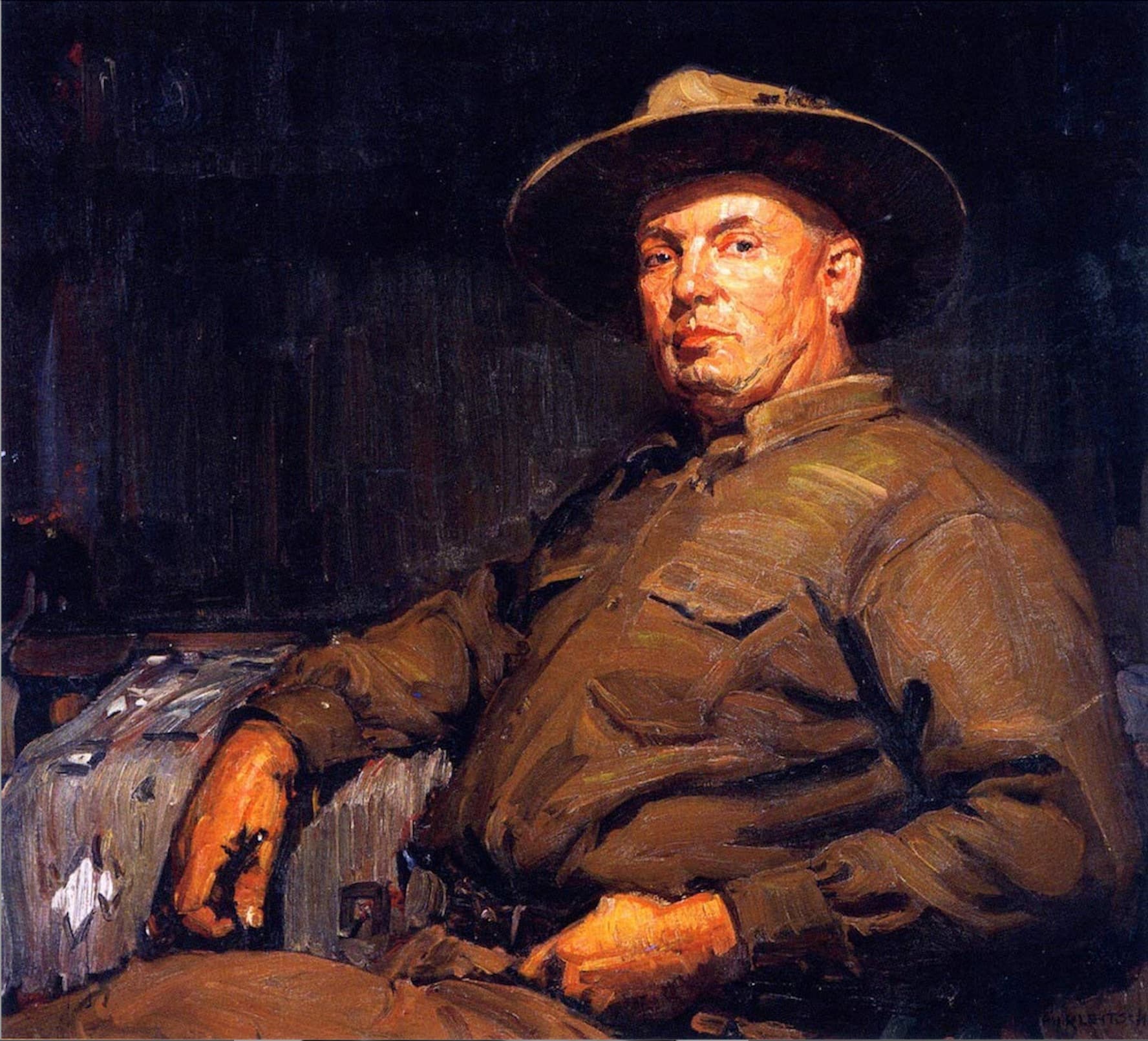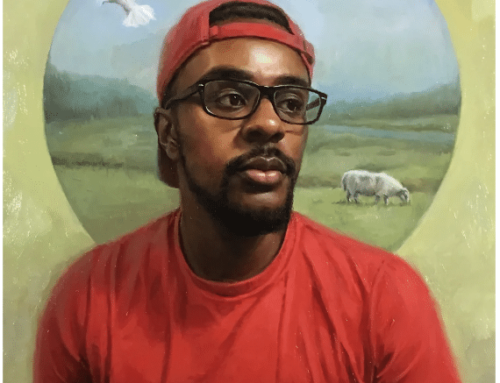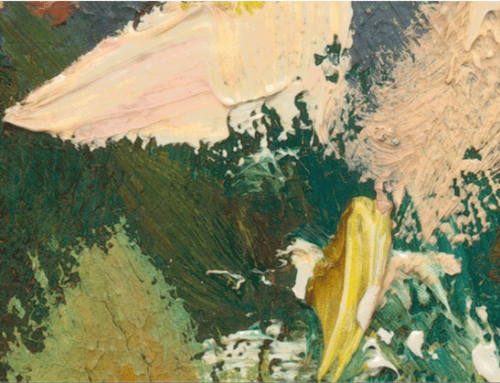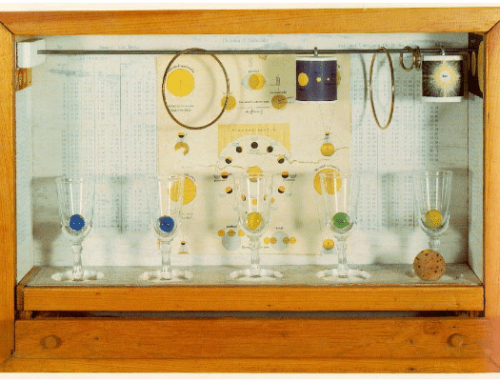It’s one of the directives from Dennis Sheehan’s little On Painting list I’ve been sharing with readers: KEEP INTEREST EVERYWHERE!
I take this to mean that every inch of your painting should be “activated.” In other words, avoid unintentionally “flat” areas of uninterrupted color that offer relatively little “interest for the eye.”
There are various ways to bring such dead zones to life primarily having to do with variations in color, texture, and brushstrokes.
For an example, let’s take a portrait by Joseph Kleitsch (1882-1931). Born in Hungary, Kleitsch studied art in America and became a celebrated was portraitist and plein air painter who helped found the California School of Impressionism.
Artist and Inside Art reader Kevin Peterson (whose work you can see here) tipped me off to a striking portrait he first saw in a book published by the Irvine Museum. The painting, untitled, is referred to as “unidentified man at Pala Indian Reservation.”
Kevin says it made an indelible impression on him then, so imagine meeting the original face to face in a cluttered storage / copier room while on a tour of a prominent private art collector. Kevin writes:
“We were led into a small room that had file cabinets and storage shelves and a copier. As folks filed out I was able to get fully into the room… only one painting was in there and it was this one by Joseph Kleitsch. Nirvana… I spent at least five minutes alone with it studying the strokes and rich hues…dashes of red and pink against grayed greens and browns and blues. Remarkable. Inspiring. Totally dug it, and the lasting, juicy memory.”
Kleitsch’s composition places the figure’s face well above eye level, which may be somewhere near the man’s belly. The painter thrusts the man’s body toward the viewer, suggesting a figure of authority and control by way of emphasizing his physical presence. And of course we can’t ignore the chiaroscuro of the lit-up figure’s face against the shadows behind him.
This painting checks numerous boxes on “The List” including getting the viewer’s attention and keeping it by loading it with interest. Let’s consider that background. This could have been plain solid black – it might look that way on your computer screen in fact, but actually it’s full of color.
Here is a closeup of the background (left) and the same image edited in a software program (right) to give it a little more color-intensity and exposure.
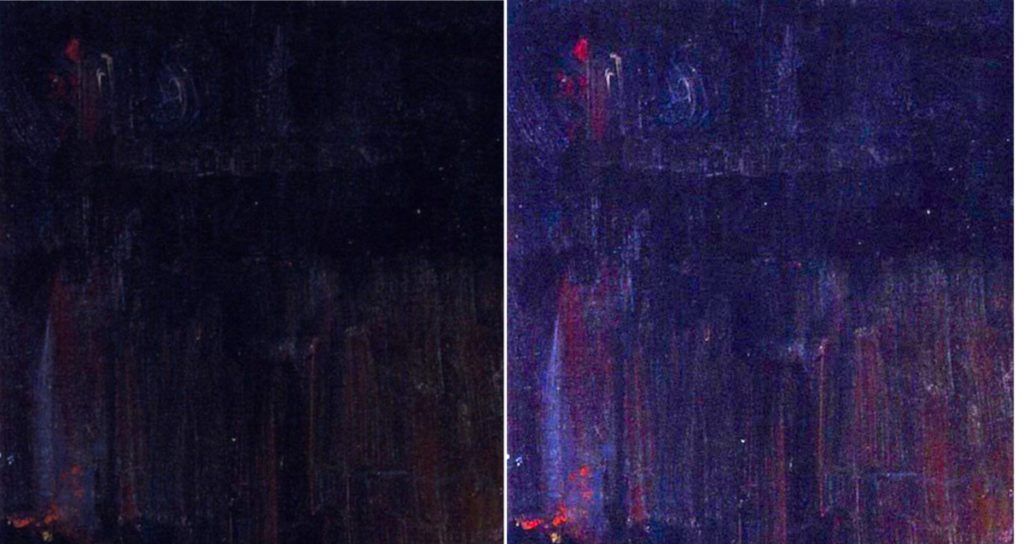
This is from the area on the painting’s upper left side, above the figure’s arm and before the brim of his hat. Even with the terrible reproduction quality of a computer screen, you can see in the enhanced image (right) that this area is activated by brushstrokes in the form of big, textured ropes of “juicy” paint and lots of color. Even in the poor JPEG above it’s evident this painter enjoyed the process, and we’re talking about negative space here.
Another box this work checks is “Keep some things hidden for the viewer to discover.” Check out the blanket under the guy’s hand – it’s of native American design. And in his hand? Looks like a pipe.
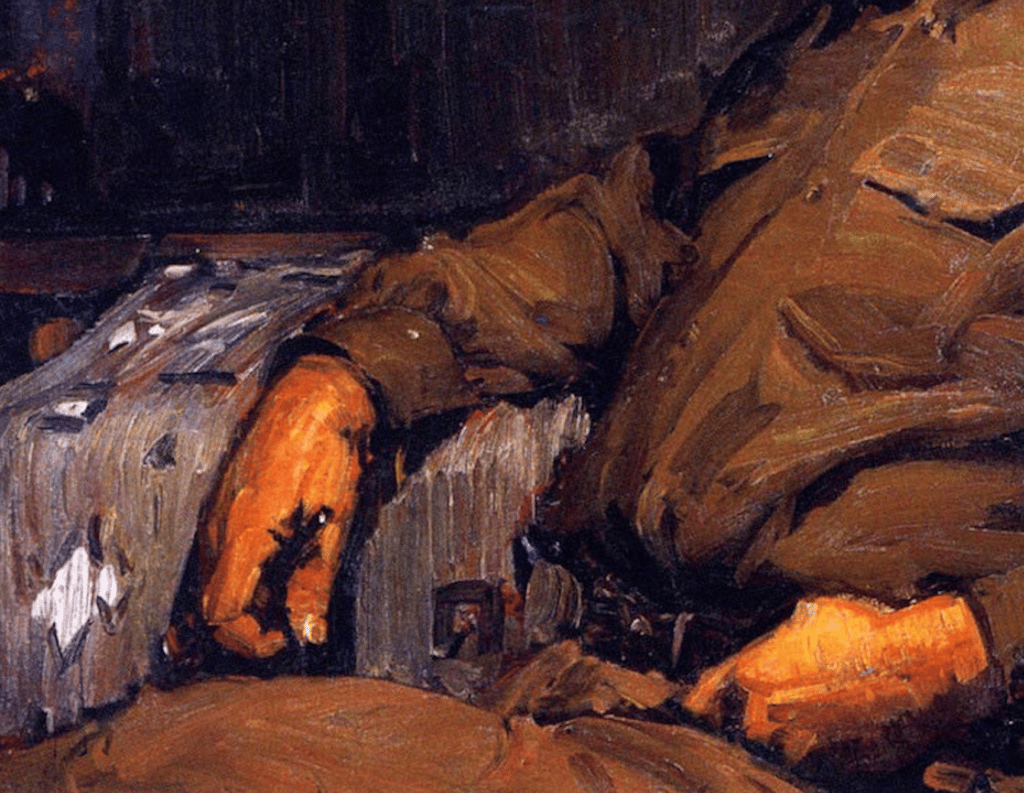
Attention-Getter of the Day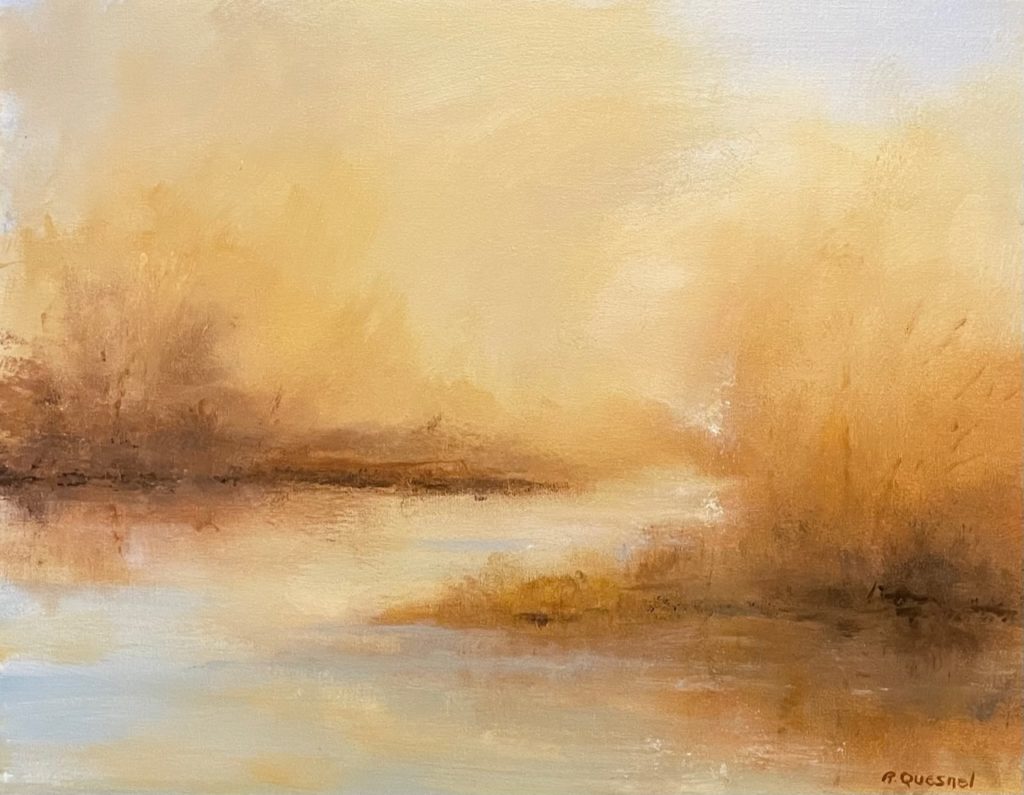
Artist Roger Quesnel sent this image in answer to our call for paintings that have impact at first sight. Quesnel works largely from imagination. This particular painting pays homage to Turner, whose spectacular explosions of light seemed to blow the darks out of the rest of his colors – and certainly got the attention not only of his time but ours as well.

